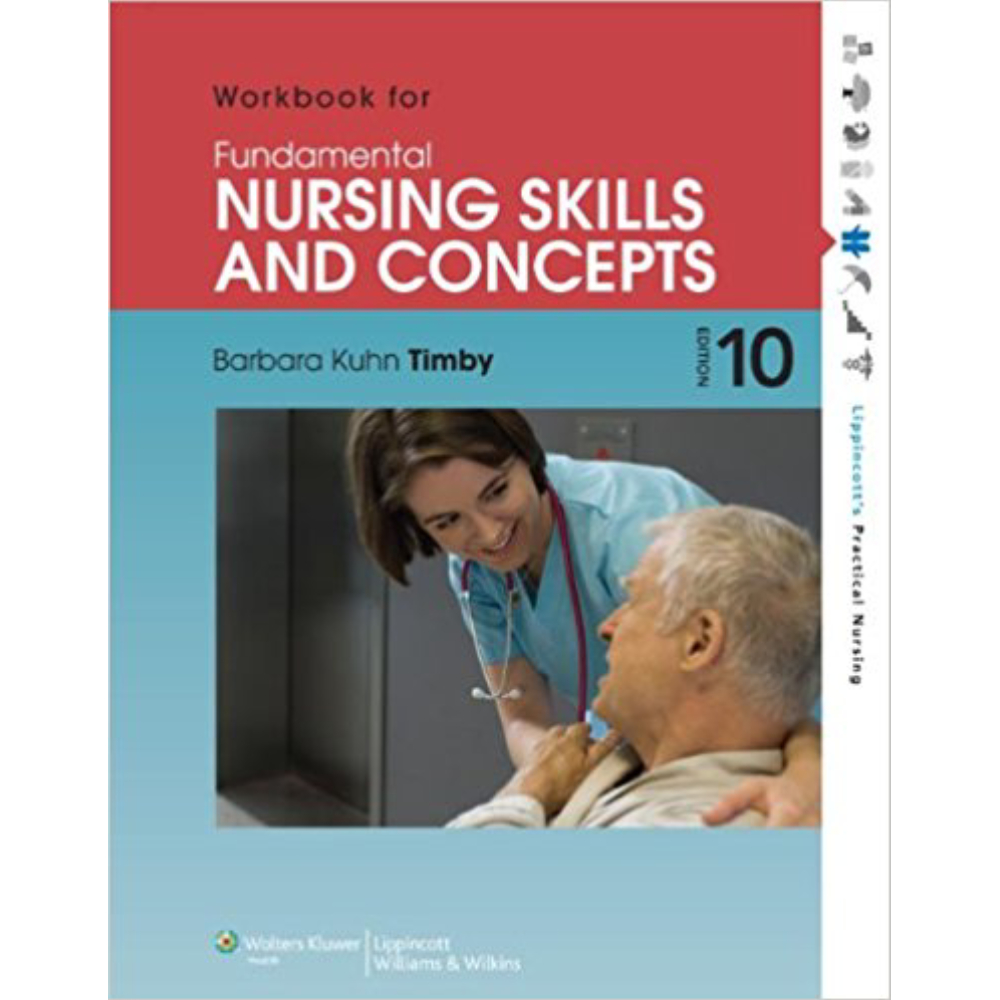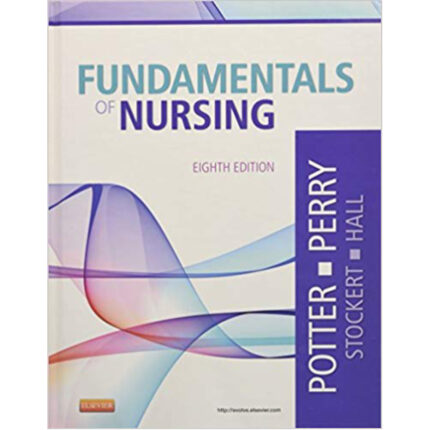Fundamental Nursing Skills And Concept 10th Edition By Timby – Test Bank
1. A client admitted to the health care facility for minor surgery is given a booklet by the nurse about the health care facility. Which of the following is a purpose of this booklet?
A) To orient the client to the facility
B) To provide a source of therapeutic distraction for the client
C) To obtain the client’s consent for the surgery
D) To list the cost of diagnostic tests
Ans: A
Feedback:
This type of booklet is often used to help to orient the client to the facility. It contains information such as gift shop hours, newspaper deliveries, location of the chapel, and name of the chaplain. The booklet is not for distraction and it does not elicit informed consent or list the costs of the various diagnostic tests.
2. A client has been admitted to the health care facility for observation and will return home the same evening. The client has a gold ring, watch, reading glasses, and other personal belongings. What care should the nurse take with regard to these objects?
A) Ask the client’s relatives to take the belongings home.
B) Keep the client’s belongings secured in a locker.
C) Allow the client to wear them unless moving out of the room.
D) Hand over the belongings to the admitting department.
Ans: B
Feedback:
The nurse should keep the client’s belongings secured in a locker. This is what is normally done for clients who are not expected to stay longer than 24 hours in the health care facility. Relatives of clients who may stay for a longer time will be asked to take back the belongings. Health care facilities do not permit clients to wear ornaments or keep their belongings with them during their stay at the facility. The admitting department does not take responsibility for clients’ belongings.
3. A nurse is taking a note of a client’s belongings by recording their details in the medical record. How should the nurse best describe a client’s ring?
A) Describe the color of the ring.
B) Describe the size of the ring.
C) Describe the type of metal and stones in the ring.
D) Describe the estimated weight of the ring.
Ans: C
Feedback:
Rather than simply indicating that the nurse placed a ring in the safe, it is important to describe the type of metal and stones in the ring. Color, size, and weight of the ring are secondary.
4. When keeping a client’s personal belongings in a locker, the nurse should ensure that the envelope is sealed and signed by which of the following people?
A) Client and a relative
B) Supervisor and nurse
C) Client and a colleague
D) Client, supervisor, and nurse
Ans: D
Feedback:
It is best to have a second nurse’s, supervisor’s, or security person’s signature along with the client’s signature on the envelope containing secured valuables.
5. A client admitted to a health care facility uses a walker for support. What is the nurse’s responsibility with regard to the walker when admitting the client to the nursing unit?
A) Provide the client with another walker during his stay at the facility.
B) Mark the client’s walker with a large, easily readable label.
C) Keep the walker in a locker until the client is discharged.
D) Ask relatives to bring the walker only at the time of discharge.
Ans: B
Feedback:
The nurse should mark the client’s walker with a large, easily readable label to enable easy identification. The nurse need not provide the client with another walker during his stay at the facility, keep the walker in a locker until the client is discharged, or ask relatives to bring the walker only at the time of discharge.
6. A nurse is caring for a client who has been admitted with a fracture in his hand. How should the nurse assist the client to undress at the bedside?
A) Roll the client from side to side.
B) Lift the client’s head to guide the garment over it.
C) Gather the garment and work it up and over the body.
D) Ask the client to lift his hips to slide clothes up or down.
Ans: C
Feedback:
The nurse should gather the garment and work it up and over the body. The nurse should not roll the client from side to side or ask the client to lift his head or hips as the client may be weak and tired. The client can sit on the edge of the bed and can help the nurse in the process. The nurse should first release any fasteners such as zippers and buttons and remove the item of clothing in whatever way is most comfortable and least disturbing.
7. During the admission phase, the nurse is required to assess the client and collect information for the database. The nurse can also delegate some part of the work to other ancillary staff. Which of the following can the nurse delegate to an unlicensed care provider?
A) Certain aspects of the client’s physical assessment
B) Creating a nursing care plan
C) Administering the client’s medications
D) Documenting the client’s medical history
Ans: A
Feedback:
Although the registered nurse is responsible for the admission assessment, the nurse may delegate some aspects to the practical nurse, nursing student, or other ancillary staff. For example, the nurse can delegate parts of the client’s physical assessment, which includes taking vital signs, to the other ancillary staff. The nurse cannot normally delegate the creation of a care plan, medication administration or documentation to an unlicensed care provider.
8. Once a client is admitted and all the admission data are collected, the nurse is expected to develop an initial plan for the client’s care. By what point after admission should the nurse develop the plan?
A) No later than 48 hours
B) No later than 24 hours
C) No later than 72 hours
D) No later than 30 hours
Ans: B
Feedback:
Once all admission data are collected, the nurse develops an initial plan for the client’s care as soon as possible but no later than 24 hours following admission. The nurse cannot delay developing the initial plan for the client’s care beyond 24 hours.
9. A physician is examining the client during the client’s initial physical examination. After collecting all the data, the physician writes R/O in the medical records and suggests some more tests and examinations. What does the physician mean by R/O?
A) Rule out
B) Revise order
C) Record out
D) Refill out
Ans: A
Feedback:
If the physician is unsure of the actual medical diagnosis, the physician uses the term rule out, or the abbreviation R/O, to indicate that a condition is suspected, but additional diagnostic data must be obtained before confirmation. R/O does not mean revise order, record out, or refill out.
10. A client states that she is “fed up” with the care that she has been receiving in the hospital and plans to leave immediately. What procedure is followed with regard to this client?
A) The client needs to demonstrate that she is able to care for herself independently.
B) The client needs to be informed that it is illegal to leave against medical advice.
C) The client needs to sign a form releasing the physician and agency from responsibility.
D) The client needs to have a friend or relative accompany her from the hospital.
Ans: C
Feedback:
If the client is determined to leave a health care facility, the nurse asks him or her to sign a special form. This signed form may release the physician and agency from future responsibility for any complications. The client does not need to demonstrate self-care ability or be accompanied by another person. This action is detrimental but is not illegal.













Reviews
There are no reviews yet.